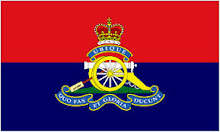Located in the Grand Place in Lille is the Column of the Goddess, a memorial commemorating the Siege of Lille in 1792.
 |
| Goddess Memorial Grand Place Lille |
The Siege of Lille in 1792 occurred during French Revolutionary Wars. As the French Revolution spread, other monarchs in Europe feared it would lead to uprising in their own countries. The Prussians and Austrians, in particular, called for action by the monarchies of Europe to liberate the French King Loius XIV. The French Revolutionaries encouraged Dutch patriots to rebel against their Austrian rulers. The rebellions failed and the French Legislature now looked to direct action declaring war on Austria and Prussia on 20th April 1792.
The initial battles from 1792 to 1797 pitted the French against a coalition of nations which included Austria, who would invade from the Netherlands, Prussia, invading from the Rhineland, supported by Great Britain.
In September 1792 13,500 Austrian troops with 52 artillery pieces laid siege to Lille. The city was heavily bombarded for nine days.
 |
| Siege of Lille 1792 |
Many houses were set on fire and the main church, Saint-Etienne, destroyed. The citizens of Lille formed 'fire brigades' to put out the flames.
 |
| Siege of Lille 1792 - Bombardment. |
The French gunners in Lille responded to the Austrian artillery and distinguished themselves in the engagement. Ultimately the Austrian force was too small to surround the entire city allowing the French to reinforce the defenders.
The siege lasted from the 25th September to 8th October when the Austrians withdrew.
The bravery of the Gunners was recognised by Emperor Napoleon Bonaparte who decreed they should form a separate battalion as the Canonniers Sédentaires de Lille.
 |
| Canonniers Sédentaires de Lille.Siege of Lille 1792 |
The Column of the Goddess was built in between September 1842 and 1845. It is said that the column consists of a gun barrel with St Barbara (patron saint of Artillery) on the top. The statue is holding a taper for the firing of a cannon.
 |
Column of the Goddess Lille
Siege of Lille 1792 Monument |
 |
Column of the Goddess Lille
Siege of Lille 1792 Monument |






































































